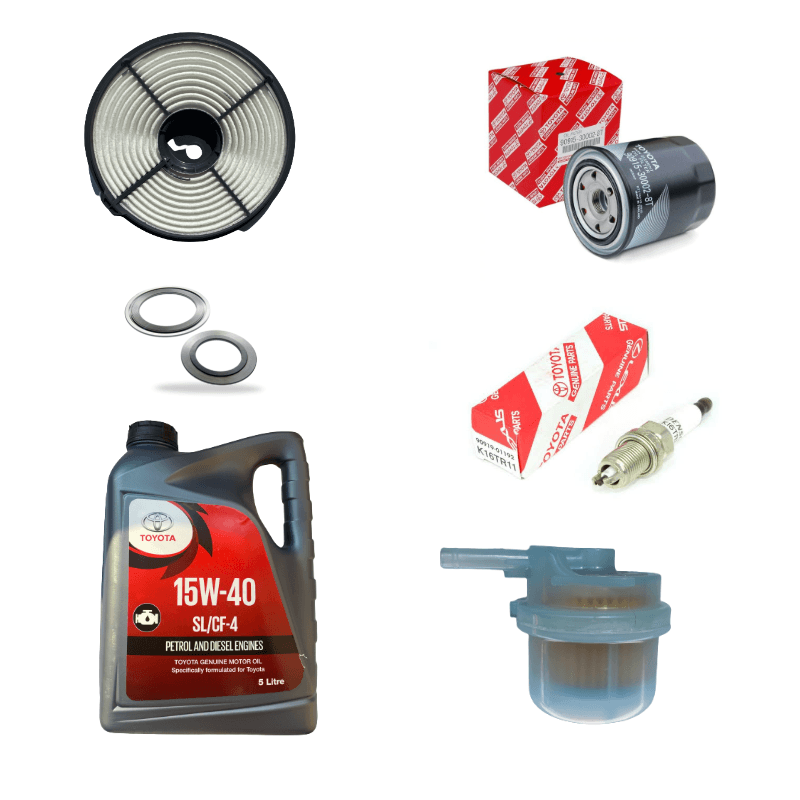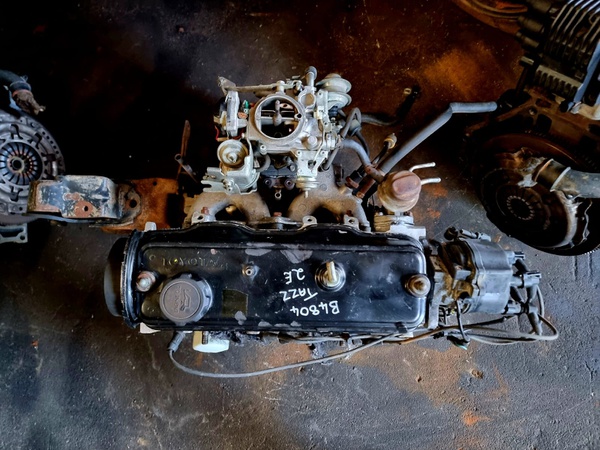Toyota Tazz: A Compact Car That Offers Big Value and Long-Term Durability
Wiki Article
Discover the most recent Trends in Engine Technology Via Tazz
In the swiftly advancing landscape of automobile technology, Tazz stands at the leading edge, highlighting substantial improvements in engine systems that prioritize both technology and sustainability. tazz. From crossbreed engines that maximize gas efficiency to the emergence of hydrogen gas cells, the trends forming modern-day powertrains are not just improving performance but additionally resolving vital ecological challenges. As the industry remains to press borders, it is vital to think about how these growths will influence future transportation services and the more comprehensive implications for international power usage. What exists ahead in this crucial transformation?Hybrid Engine Innovations
Hybrid engine advancements represent a critical shift in auto modern technology, incorporating the advantages of interior burning engines with electrical propulsion systems. This integration not only enhances fuel effectiveness yet also minimizes emissions, meeting significantly strict environmental laws. By utilizing both energy sources, hybrid engines can enhance performance, delivering power when required while preserving gas during much less requiring driving problems.Current developments in hybrid technology include improvements in battery effectiveness and regenerative braking systems. These technologies permit for better power healing during slowdown, which can be rerouted to help in acceleration or power accessory systems. Manufacturers are focusing on light-weight materials and portable layouts to make best use of the efficiency of hybrid powertrains.
The development of plug-in hybrids has actually additionally expanded the marketplace, enabling vehicle drivers to bill their lorries using standard electric outlets. This feature typically permits for significant all-electric range, additional reducing reliance on traditional fuels. tazz. As the automotive industry proceeds to develop, hybrid engine technologies are anticipated to play an important duty in bridging the space in between conventional vehicles and totally electric models, giving a transitional service that caters to diverse consumer demands and choices
Breakthroughs in Electric Powertrains
The automobile landscape is swiftly developing, with electrical powertrains emerging as a leading pressure in sustainable transportation. Advancements in electric car (EV) innovation are substantially enhancing individual, efficiency, and efficiency experience. Trick technologies consist of enhancements in battery chemistry, which have raised energy thickness, minimized billing times, and prolonged total battery life.Solid-state batteries, as an example, guarantee to reinvent the market by offering greater safety and security and performance compared to typical lithium-ion cells. Moreover, developments in regenerative stopping systems are allowing lorries to recoup power during deceleration, contributing to overall efficiency.
Along with battery modern technology, electrical motor designs are ending up being a lot more advanced. Technologies such as integrated electric motors and advanced thermal management systems are assisting to optimize power shipment and minimize weight, ultimately boosting lorry characteristics.

Jointly, these advances emphasize the commitment to transition in the direction of cleaner, a lot more efficient transport services, positioning electric powertrains at the leading edge of automotive development.
The Rise of Hydrogen Fuel Cells
Increasingly, hydrogen gas cells are acquiring traction as a viable choice to typical inner combustion engines and battery electric automobiles. This technology takes advantage of the chemical power saved in hydrogen, transforming it into power with an electrochemical reaction with oxygen. The main result of this process is water, making hydrogen fuel cells an ecologically pleasant alternative with no emissions at the tailpipe.
Car manufacturers are progressively spending in hydrogen fuel cell innovation, acknowledging its possibility for long-range applications and quick refueling capacities that measure up to conventional gas. In addition, sectors such as heavy-duty transportation and public transportation are especially appropriate for hydrogen gas cells, where battery electric options may fail because of weight and array limitations.
As research and investment continue to increase, hydrogen fuel cells are positioned to play a considerable function in the future landscape of clean transportation and power remedies.
Enhancements in Internal Burning Engines
Advancements in interior burning engine (ICE) innovation are transforming read what he said standard automobiles to meet modern environmental standards and efficiency expectations. Among one of the most significant enhancements entails the integration of innovative gas shot systems. These systems maximize the air-fuel mixture, boosting combustion efficiency and leading to minimized emissions. Direct gas injection, as an example, enables far better atomization of gas, resulting in even more complete combustion and enhanced power outcome.Additionally, turbocharging has actually gotten importance, allowing smaller sized engines to supply higher performance without the weight of larger engines - tazz. This technology not just increases effectiveness however likewise adds to lower gas intake. Variable valve timing systems are also being fine-tuned, enabling engines to adapt to different driving conditions for improved torque and responsiveness
Moreover, using light-weight materials in engine building and construction is ending up being standard, additional improving fuel efficiency by decreasing overall car weight. Engine control units (ECUs) are progressively innovative, enabling real-time modifications that maximize performance and exhausts.
These enhancements collectively indicate a critical change in ICE technology, aligning with worldwide sustainability objectives while still offering the performance motorists anticipate from their vehicles. As the industry progresses, these enhancements remain to form the future of conventional vehicle engineering.
Future Trends in Engine Efficiency
Significant developments in engine efficiency are anticipated as suppliers concentrate on incorporating advanced technologies to satisfy stringent ecological policies and customer demands. The change towards electrification, crossbreed systems, and alternative gas is reshaping the vehicle landscape, driving innovations that boost fuel economic situation and reduce discharges.One of the essential fads is the execution of sophisticated materials and making techniques. High-strength alloys and lightweight compounds add to minimized vehicle weight, hence enhancing overall efficiency. Furthermore, the fostering of turbocharging and variable shutoff timing technologies allows for enhanced power output from smaller sized engines, further improving gas economic situation.

Verdict
Innovations in hybrid engine systems, electric powertrains, and hydrogen fuel cells show a commitment to lowering exhausts while improving performance. Enhancements in interior burning engines and a focus on lightweight materials add to overall engine efficiency.From crossbreed engines that maximize gas performance to the appearance link of hydrogen fuel cells, the fads forming contemporary powertrains are not only improving performance yet likewise resolving essential ecological challenges.Crossbreed engine technologies stand for a critical change in auto modern technology, combining the advantages of interior burning engines with electrical propulsion systems.Additionally, turbocharging has gotten importance, enabling smaller sized engines to supply greater efficiency without the weight of bigger engines. Additionally, the adoption of turbocharging and variable shutoff timing modern technologies enables for improved power outcome from smaller sized engines, even more enhancing gas economic climate.
Renovations in interior burning engines and a focus on lightweight materials add to general engine efficiency.
Report this wiki page